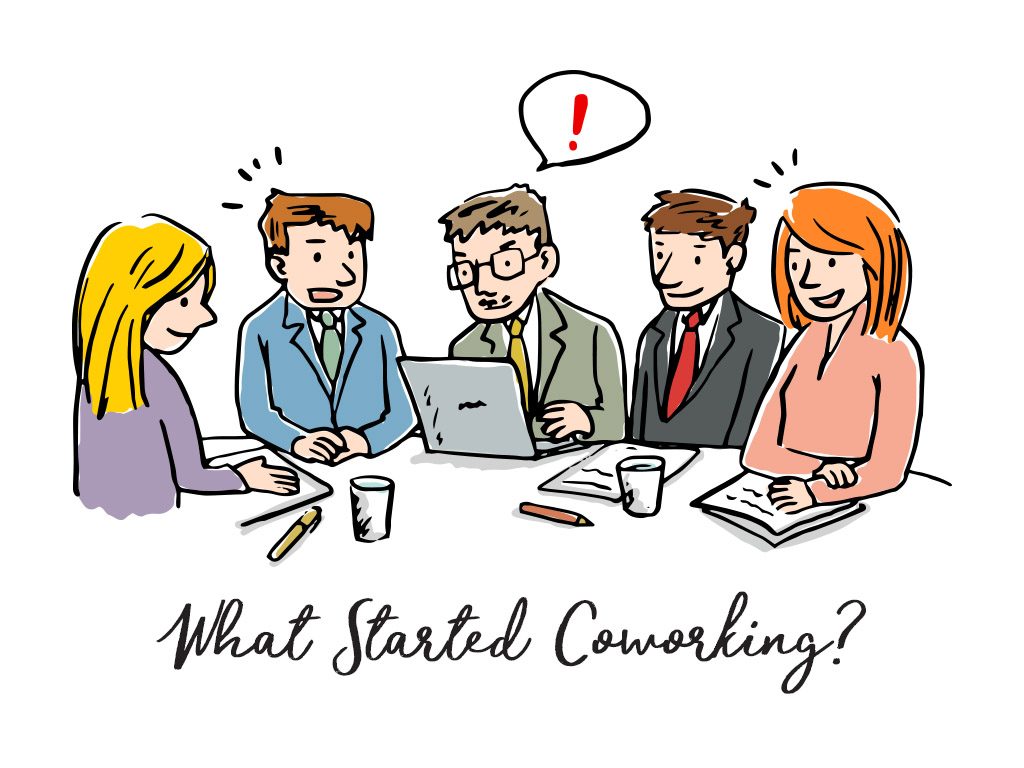Going Back: What Started Coworking?

Where did coworking start?
1. In 1995, the birth of hackerspace began which similarly resembles the notion of a coworking space.
2. In 1999, the term ‘coworking’ was said to be coined by an American game designer, Bernard DeKoven.
3. In 2002, Schraubenfabrik came into view and was named an entrepreneurial center. It has later expanded with two more branches in Vienna and was under the company Konnex Communities which was the first official local network of coworking spaces.
4. In 2005, the first official coworking space was born in San Francisco and was later replaced as Hat Factory in 2006.
5. In 2007, ‘coworking’ has trended in search queries among others on Google. In 2013, Wikipedia was officially a page.
6. In 2017, the growth of coworking spaces has continued vastly and remains unstoppable with a predicted number of 13,800 worldwide by October of this year.
Numerous coworking space in Manila has been trending for a while for their chic setups and cool facilities – promoting collaborative working between professionals and aspirants from different industries. With these particular spaces being filled with young innovators, the coworking scene remains unstoppable and yet, it is just beginning as more and more entrepreneurs are setting up coworking spaces to accommodate the younger generation who are aiming for success and fulfillment over their aspirations.
However, as the number grows, little is known about the coworking scene. Yes, one may know what it looks like and how it works, but only a few could tell from where it all started.
To save you time, here’s a brief trip to the earlier days of coworking spaces.

1995
In 1995, the birth of hackerspace began. With the founding of C-Base in Berlin, a space provided for hackers to pursue their computer-oriented undertakings, the trend of hacker-community spaces was introduced, hence, the hackerspace. Most likely, what happens in ‘hackerspace’ is that people who have the same interest in computers gather in an area to collaborate and work in an open environment. This notion particularly resembles the idea of a coworking space that we have today, hence, it was claimed by some as the origin of the said scene.

1999
In 1999, the term ‘coworking’ was said to be coined by an American game designer, Bernard DeKoven. However, it was not what we thought it was. During that time, what DeKoven meant by coworking is: working together as equals. Back then, he was looking for a way to break down the common hierarchal boundaries that create a gap between people, and ultimately, promote collaborative work between people and computers.
At the same year, the opening of 42 West 24 happened. 42 West 24 is a workspace that is based in New York City. This space offered a great work environment with flexible membership options. However, it lacked emphasis on networking, unlike today, where one of the key elements of a coworking space is building wider networks. Regardless, it was still considered an achievement in the coworking scene and is still present in NYC until now.

2002
In 2002, Schraubenfabrik came into view and was named an entrepreneurial center. It happened when two Austrian entrepreneurs looked for a space where they could gather like-minded people to work, and of course, collaborate. What they used as their space was a former factory, which became the home of various professionals – from freelancers, PR consultants, to start-ups. Today, Schraunbenfabrik and its extended spaces (Hutfabrik in 2004 and Rochuspark in 2007), operates under the company Konnex Communities, which actually became the first among the local networks of coworking spaces in Vienna, Austria.

2005
Later in 2005, the first official coworking space was born in San Francisco. Who’s the man? Brad Neuberg. Apparently, the idea of creating a coworking space was due to business centers becoming unsocial and the zero productivity rate at a home office. During that time, the space was hosted by a home for well-being called Spiral Muse, a non-profit co-op. The service was pretty good as there were five to eight desks offered two days a week, shared lunches, massage, meditation breaks, bike tours, and of course, free Wi-Fi. However, the space closes at 5:45 PM sharp, hence, it was not recommended to stay there for too long. After a year, the coworking space closed and was replaced by Hat Factory.

2007
In 2007, ‘coworking’ has trended in search queries among others on Google. Hence, with its popularity, the idea of coworking has become an aspect of mainstream media in the United States. However, the term was restricted to the United States and can only be used within the state.
Not long after, slightly in 2013, coworking has made its way onto the English version of Wikipedia – and from there, the coworking scene continued to rise and spread around the globe.

2017
In 2017, the growth of coworking spaces has continued vastly and remained unstoppable. According to the 2017 Global Coworking Survey, the estimated or predicted figures has summed up to 13,800 coworking spaces worldwide. That’s an additional 2,500 to the 2016’s 11,300. Furthermore, the expected number of members for 2017 has summed up to 1,180,000, which was only 835,000 in the 2016 stats. With all these numbers continuously flowing, the coworking space scene may be in it for the long run.
Key Takeaway
Given these points, coworking spaces are indeed created to be a place for collaborative work and learning regardless of the differences in nature and expertise among people – and continues to aim for the same, even today.





